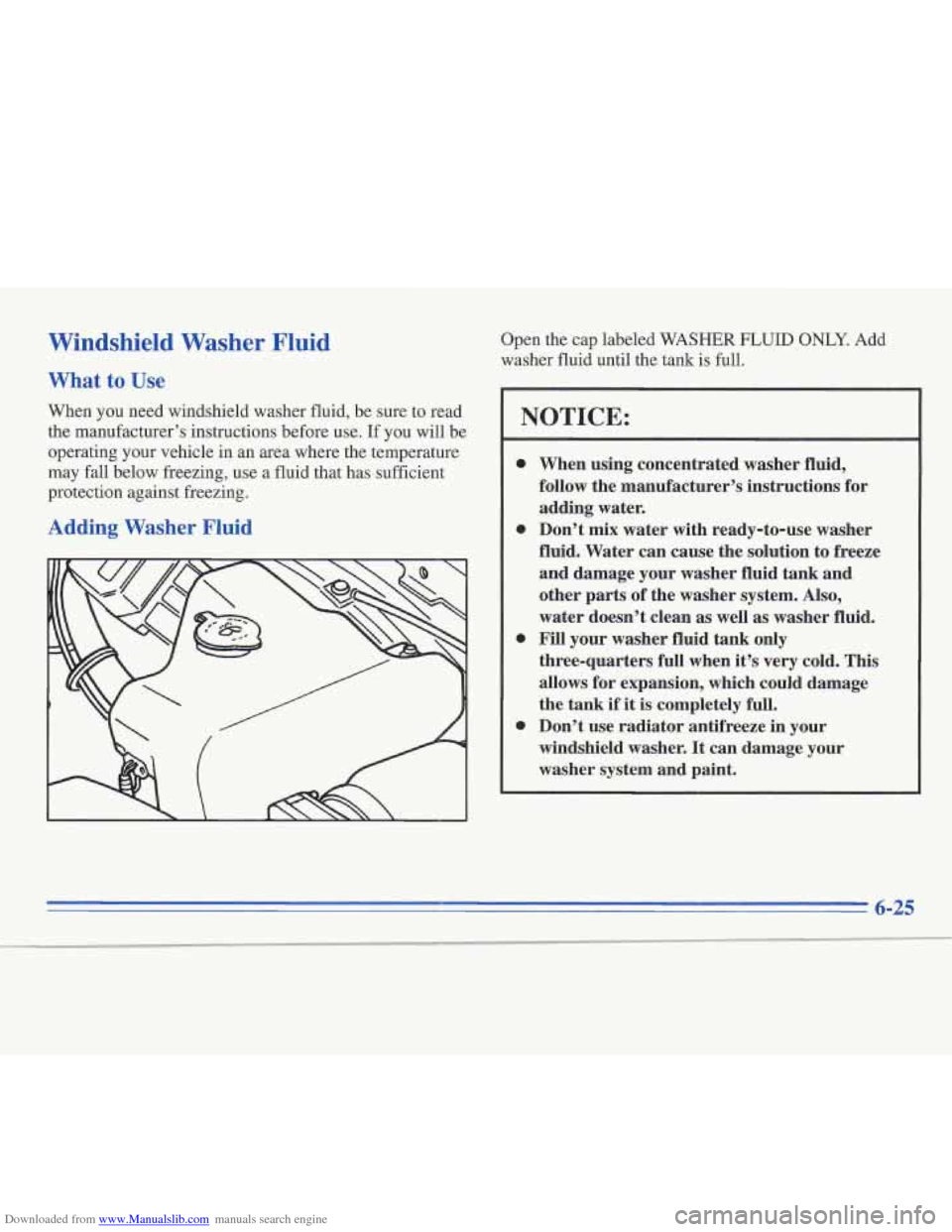Page 203 of 306
Downloaded from www.Manualslib.com manuals search engine 1. You can remove the
coolant surge tank
pressure cap when
the cooling system,
including the coolant surge tank pressure cap
and upper radiator
hose, is no longer hot.
urn t' Turn the pressure cap slowly about one-quarter ti
the left and then stop.
If you hear a hiss, wait for that to stop. A hiss means
there is still some pressure left.
0
2. Then keep turning the
pressure cap slowly,
and remove it.
3. Then fill the coolant
surge tank with the
proper
mix, up to the
FULL COLD mark.
5-18
n I
Page 204 of 306
Downloaded from www.Manualslib.com manuals search engine 4. With the coolant surge tank pressure cap off, start
the engine and
let it run until you can feel the upper
radiator hose getting hot. Watch out for the
engine fans. By
this time, the coolant level inside the coolant surge
tank may be lower.
If the level is lower, add more of the
proper
mix to the coolant surge tank until the level
reaches the
FULL COLD mark.
5. Then replace the
pressure cap. Be
sure the pressure
cap is tight.
5-19
Page 239 of 306
Downloaded from www.Manualslib.com manuals search engine :: ’ 1 ,-
Checking Coolant
Turning the surge t engine and radiator are hot can allow steam and
scalding liquids to blow out and burn you badly.
Never turn the surge tank pressure cap
-- even a
little
-- when the engine and radiator are hot.
LOW
COOLANT
J
If this light comes on,
it means you’re low on
engine coolant.
See “Low Coolant
Light” in the Index.
6-22
Page 240 of 306
Downloaded from www.Manualslib.com manuals search engine Adding Coolant
If you need more coolant, add the proper mix at the
surge tank, but only when the engine is cool.
I
You can be burned if you spill coolant on hot
engine parts. Coolant contains ethylene glycol,
and
it will burn if the engine parts are hot
enough. Don’t spill coolant on a hot engine.
When replacing the pressure cap, make sure it is tight.
Surge Tank Pressure Cap
NOTICE:
The surge tank pressure cap is a 15 psi (105 kPa)
pressure-type cap and must be tightly installed to
prevent coolant loss and possible engine damage
from overheating.
When you replace the surge tank pressure cap, a GM cap
is recommended.
Thermostat
Engine coolant temperature is controlled by a thermostat
in the engine coolant system. The thermostat stops the
flow of coolant through the radiator until the coolant
reaches a preset temperature.
When you replace your thermostat, an
AC@ thermostat
is recommended.
6-23
Page 242 of 306

Downloaded from www.Manualslib.com manuals search engine Windshield Washer Fluid
What to Use
When you need windshield washer fluid, be sure to read
the manufacturer’s instructions before use.
If you will be
operating your vehicle in an area where the temperature
may fall below freezing, use a fluid that has sufficient
protection against freezing.
Adding Washer Fluid
Open the cap labeled WASHER FLUID OmY. Add
washer fluid until the tank is full.
NOTICE:
When using concentrated washer fluid,
follow the manufacturer’s instructions for
adding water.
Don’t mix water with ready-to-use washer
fluid. Water can cause the solution to freeze
and damage your washer fluid tank and
other parts of the washer system. Also,
water doesn’t clean
as well as washer fluid.
Fill your washer fluid tank only
three-quarters full when it’s very cold.
This
allows for expansion, which could damage
the tank
if it is completely full.
Don’t use radiator antifreeze in your
windshield washer.
It can damage your
washer system and paint.